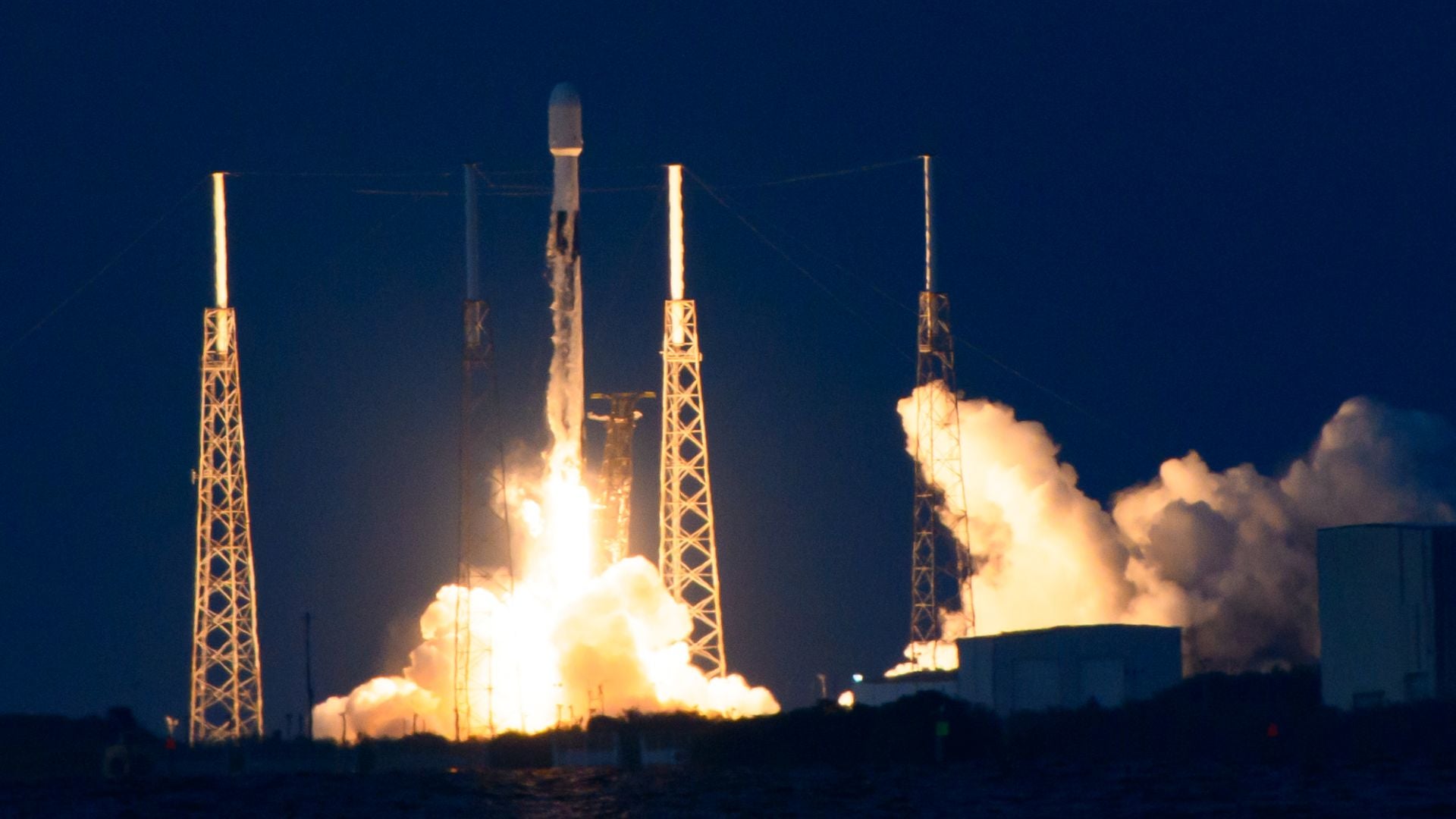Earlier today, a Falcon 9 rocket launched to space with 56 Starlink satellites on board. For SpaceX, this was an otherwise routine mission, but with this launch, the company now has over 4,000 Starlinks orbiting the Earth at low altitude — yet another unprecedented milestone for the Elon Musk-led company.
The Falcon 9 rumbled off the Cape Canaveral launch pad at the ungodly hour of 3:31 a.m. ET this morning. The core stage landed safely on the A Shortfall of Gravitas droneship stationed in the Atlantic Ocean, while the second stage successfully deployed all 56 first-gen Starlink satellites to low Earth orbit.

This is all unbelievably routine for SpaceX now, as its stalwart Falcon 9 remains the most reliable and most-used rocket in the industry. The Starlink constellation, an interconnected web of internet satellites, continues to grow rapidly, with this latest launch representing yet another notable achievement for the company. For the first time ever, SpaceX has more than 4,000 Starlinks in orbit, according to detailed statistics kept by Harvard-Smithsonian astronomer Jonathan McDowell.
Today’s launch of 56 satellites brings the current total to 4,023 Starlinks in Earth orbit, of which 3,988 are operational. Since 2019, SpaceX has launched 4,340 Starlinks, but not all of them have remained in orbit, with some being decommissioned or having technical issues. Recently, for example, SpaceX deorbited a pair of V2 Mini satellites after they began to exhibit problems shortly after launching in late February.
SpaceX’s Starlink constellation is undoubtedly impressive, but it remains incomplete as far as the company is concerned. SpaceX has permission from the Federal Communications Commission to deploy 4,408 Ku-band satellites and 7,500 V-band Gen2 satellites, but it’s waiting for FCC approval on the remaining 22,488 next-gen satellites it’s still hoping to deploy.
Astronomers won’t love today’s news. Concerns have been raised that the satellite swarm poses a threat to scientific research, whether it be to ground-based or space-based observatories. To address these concerns, SpaceX has been working on a “dielectric mirror film,” which directs light away from Earth, among other measures meant to reduce the brightness of Starlink satellites.
Today’s mission is also notable in that it was SpaceX’s 30th launch of the year (including the inaugural launch of Starship, which failed four minutes after blasting off). This torrid pace puts SpaceX on a path to surpass its 61 missions from last year. But at a pace of 88 launches, that puts the company below CEO Elon Musk’s stated goal of 100 for the year.
Want to know more about Elon Musk’s space venture? Check out our full coverage of SpaceX’s Starship megarocket and the SpaceX Starlink internet satellite megaconstellation Twitter and bookmark Gizmodo’s dedicated Spaceflight page.
